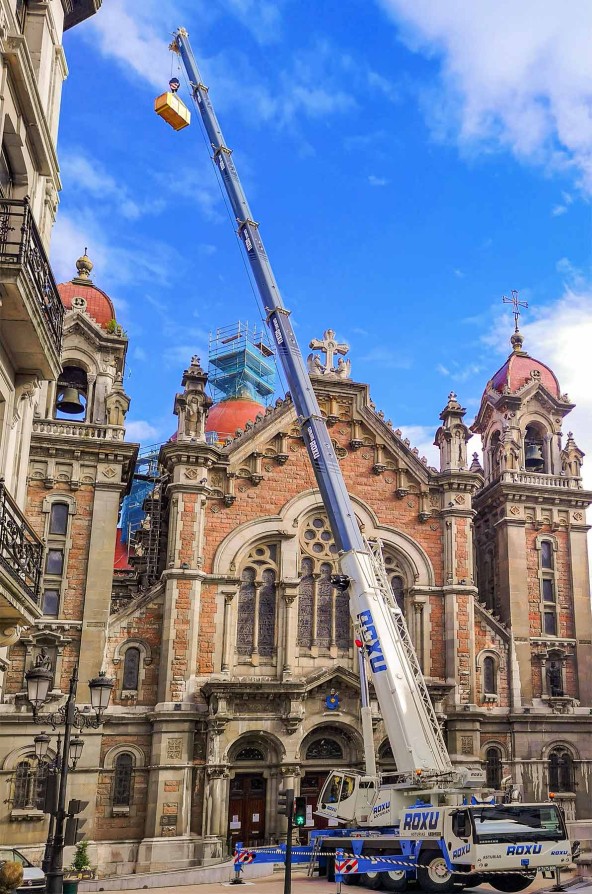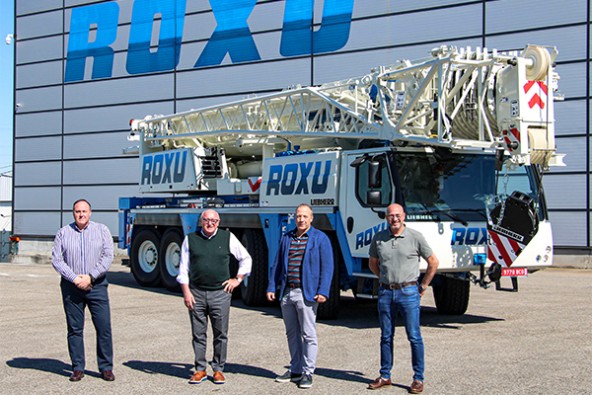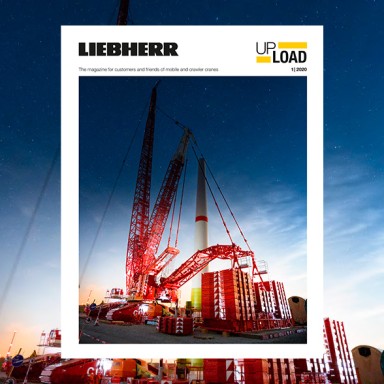
5 minutes | magazine 01/2020
The first ever LTM 1110-5.1 goes to Spain
We unveiled our new 110 tonne crane at the Bauma held in April last year in Munich with the slogan “Prepared for every task!”
I was impressed by the concept of the new crane as soon as I saw it, because its combination of mobility, lifting capacity and boom length is perfect.
Impressing concept
Since then, our Technical Testing Department has studied the prototypes in more detail, the final tweaks have been made and serial production has started. The first ever LTM 1110-5.1 was transported to Spain in May. Crane and heavy haulage contractor Grúas Roxu signed an order for two of the new 5-axle cranes before the Bauma had even finished.
José Manuel Garcia, President of the Roxu Group, explained: “I was impressed by the concept of the new crane as soon as I saw it, because its combination of mobility, lifting capacity and boom length is perfect. These features are extremely important decision-making criteria for our company.” Garcia confirmed that the Liebherr product engineers had produced a pretty good solution to the challenge set them of designing a very lightweight crane, which must nevertheless have a long telescopic boom with outstanding lifting capacity.

The new LTM 1110-5.1 helps out with the restoration of the San Juan el Real Basilica in Oviedo, Asturias.
Our smallest 5-axle crane not only impresses with its excellent performance data, but also due to its fantastic mobility – it has a gross weight of just 48 tonnes with axle loads of less than ten tonnes. This enables the LTM 1110-5.1 to be driven on roads and at times which are simply not possible for other cranes in its class or which would normally require a timeconsuming process to obtain permits.
The lightweight design of the new LTM 1110-5.1 has another benefit as well – with the standard axle load for mobile cranes of twelve tonnes, it can carry the enormous 13.4 tonnes of ballast. That enables it to carry out most of its work in the form of a fast-erecting crane. And if that is not quite enough, a total of 29 tonnes of ballast is available. Here too, our engineers made sure that the crane can carry all this ballast spread evenly around the vehicle with the axle load still remaining below 16 tonnes – ideal for countries where these high axle loads are allowed or for driving on a site with the boom lowered and therefore secure. The crane also has a trump card – its quick changing system for the ballast slabs enables the crane operator to set up the crane once it arrives at the site very quickly.
As far as hoist height is concerned, the telescopic boom on the 110 tonne crane measures 60 metres in length, making it one of the longest in its crane class. And it can also hoist more than similar cranes. If the site allows it to be positioned freely, the LTM 1110-5.1 can actually break into the next higher crane class. This is because VarioBase® Plus generates additional performance: The combination of a trapezoidal, variable support base and widened rear supports delivers particularly high lifting capacities.
“We are convinced that the LTM 1110-5.1 will quickly become established as a technical benchmark in its segment. At Grúas Roxu, we always try to purchase the best machine on the market for every different type of job. We will therefore gradually be replacing the other 5-axle mobile cranes in our fleet with the new LTM 1110-5.1”, adds Garcia.

Crane handover in Spain: from left to right: Marco García, José Manuel García, (both from Grúas Roxu), Tobias Böhler (Liebherr Ibérica, S.L.), Daniel García (Grúas Roxu).
Grúas Roxu was founded in 1979 in the Principality of Asturias in north-west Spain. Its head office is in Meres, from where the company coordinates its work in Spain and throughout Europe. The Roxu Group has also had an outlet in Costa Rica since 2013 with 27 mobile cranes, all of which were supplied by Liebherr. The group’s fleet currently comprises exactly 100 Liebherr mobile and crawler cranes of the most diverse models.
Asturias is not only famous for its rugged coast and mountains, but also for its religious sites and mediaeval architecture. For example, the new LTM 1110-5.1 has already shown what it can do against an historic backdrop – providing assistance with restoration work on the San Juan el Real Basilica in Oviedo.
There is one other feature to mention in this respect – the delivery of the LTM 1110-5.1 was a novelty from a logistics point of view and provided a challenge for Liebherr. This was because in the middle of travel restrictions and the emergency declared in Spain due to the COVID-19 pandemic, a way had to be found to deliver the crane promptly and get over all the logistical problems.
This article was published in the UpLoad magazine 01 | 2020.



